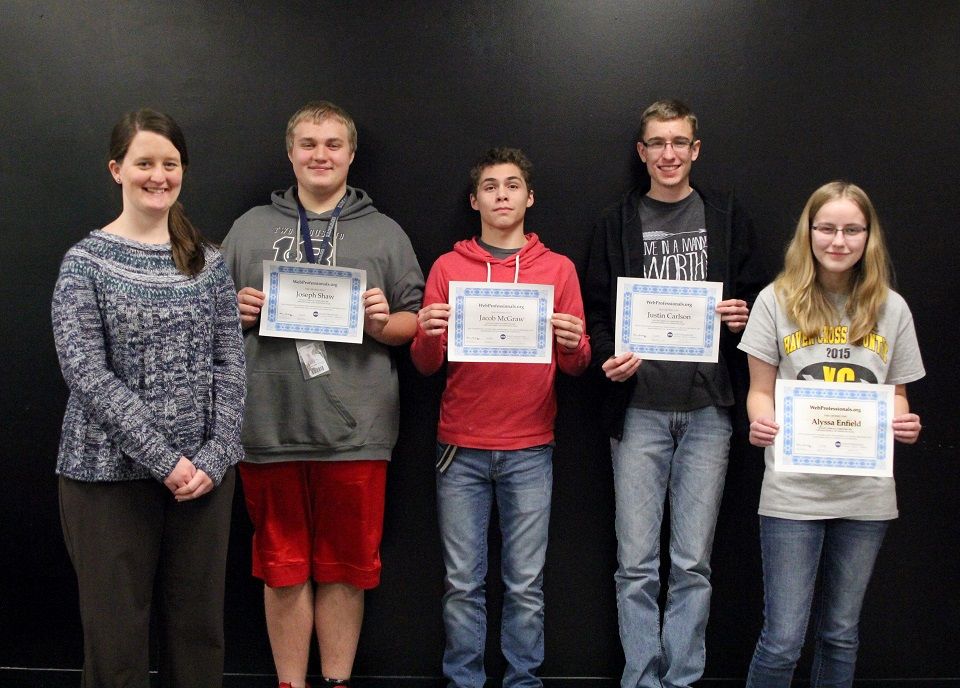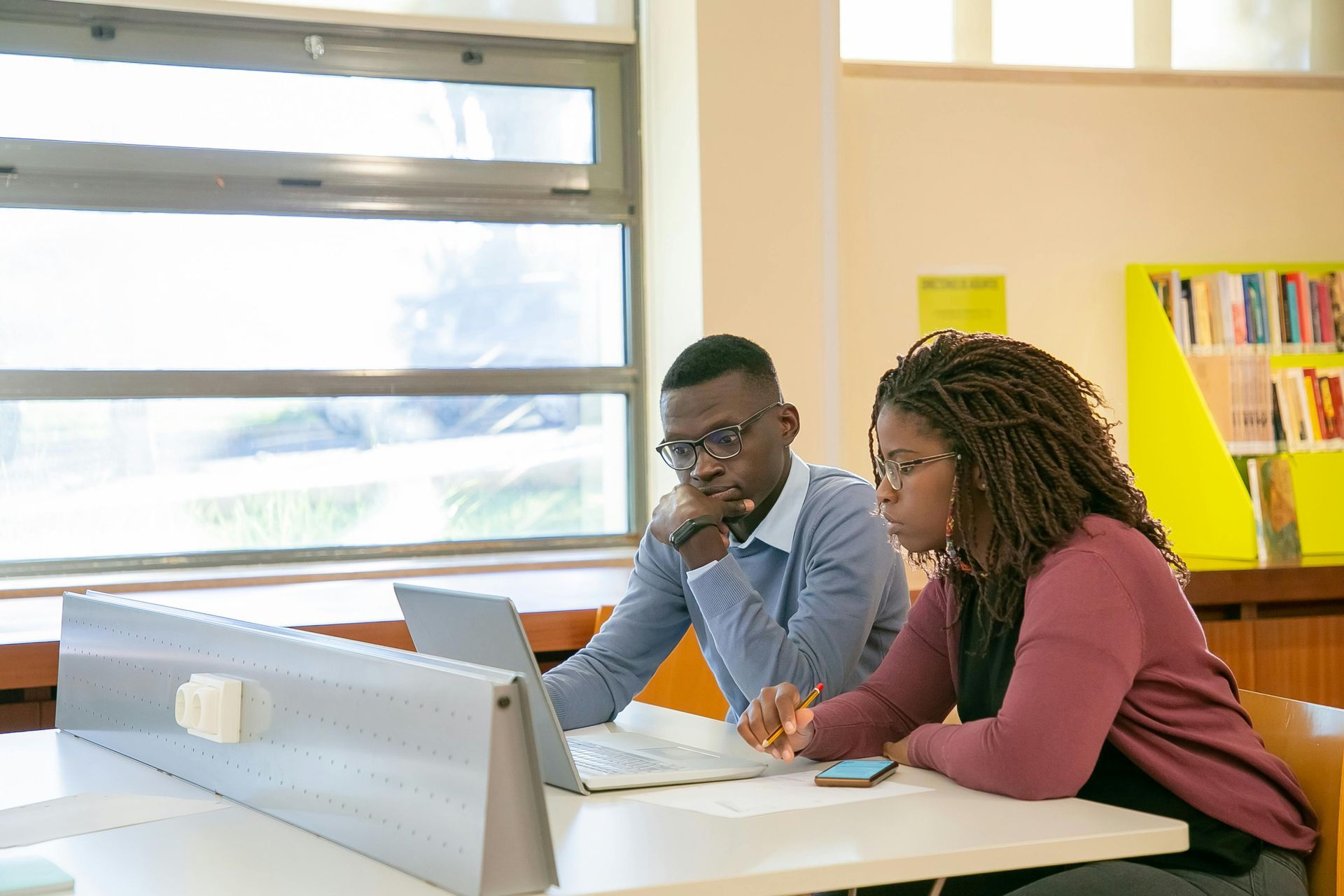Blog
CSULA and GEAR UP Program Bootcamps Inspire Los Angeles Students
As organizations scramble to find ways to connect with middle school and high school students through summer bootcamps and afterschool programs , the partnership between the California State University Los Angeles (CSULA) Pathways program and Los Angeles Unified School District (LAUSD) GEAR UP program has been immensely successful, even in the age of COVID-19 .
Engaging Students Through Online STEAM Learning
CTeLearning helped lead STEAM bootcamps in July for the LAUSD Gaining Early Awareness and Readiness for Undergraduate Programs (GEAR UP) program. GEAR UP is a Department of Education program that provides six-year or seven-year grants to partners to provide services at high-poverty middle and high schools , often with an emphasis on STEM programs . GEAR UP grantees serve students beginning no later than seventh grade and follow them through high school. GEAR UP programs support early intervention that helps students improve academic performance, increase educational expectations, and prepare for postsecondary education .
Students in the bootcamps learned coding, design, marketing, career skills and more over the four day bootcamps held entirely over Zoom . They were led by Steve Waddell, founder and lead developer of CTeLearning, and Daniel Foreman, senior lead developer of CTeLearning, as well as a terrific team from the CSULA Pathways program and mentors from the Los Angeles Unified School District GEAR UP program. The bootcamps engaged students, leveraging the art aspect of STEAM learning in teaching students how to create online spinner apps they could share with their family and friends or even continue to develop to market and sell.
This fun, hands-on and highly interactive online experience taught students with no prior coding or design experience the basics of web and mobile app development . Students progressed through a series of self-directed course activities rich with videos, animation and cloud-based art tools and coding sandboxes to allow them to create, experiment and play with their code and app graphics like professionals. The GEAR UP bootcamps assumed that none of the students had any prior experience with coding or art, so the media-rich tutorials ensured all students had the tools to learn what they needed to be successful.
Campers who needed extra help were invited into Zoom breakout rooms where CSULA Pathways team members worked one-on-one to give each camper what they needed to succeed creating their apps and be ready for the big app launch party on day four.
Day one and day four of the bootcamps were MC’d by humanoid robots “Kapono” and “Ethica,” which are part of CSULA’s Charter College of Education’s (CCOE) outreach team. The campers loved meeting with the CCOE robots and learning about coding, robotics and how the robots can dance “Gangnam Style.” Some students even danced along with the CCOE robots. Most importantly, the CCOE team showed students how robots and coding are tied together and can be a fantastic potential career path.
Students in the GEAR UP program learned how fidget spinners are used by youth and adults alike to help with concentration and anxiety, and how Daniel, Steve and some of their development team members use them when working long hours on coding projects. Many of the students shared their spinners with other students and facilitators, talking about how they help them stay a bit less fidgety.
Getting Students Excited About Coding, Design and More
How did we engage middle schoolers in a four-day online bootcamp? By combining coding, mathematics, app design, marketing, digital graphics, physics, and psychology—all with a twist of entrepreneurship and a whole lot of fun. Students got excited about the possibilities of coding and design, and one of the most exciting moments for many of them was when they each held up their phones so the other students and facilitators could see their apps in real-time.
Students had the following to say about the bootcamps:
- “The camp was overall just a fun experience and one of my favorites. One thing I mainly liked about it was that the professors were always talking and telling small stories while showing the steps of the code, which kept me more interested in the course.”
- “The thing about this course that made it fun was drawing. I have never drawn online, only on paper. In my opinion I think that drawing online was pretty fun!”
- “I really felt proud when I first saw my app work. I was impressed and relieved that I understood how to do it. I was relieved because I thought I was doing something wrong but I wasn’t. I was proud because I have never done an app before and I finally made one.”
- “When I saw my app working for the first time I felt so great! It was so simple yet it brought me closer to creating a big game that a lot of people would play! After the meeting ended I immediately went to my mom and showed her what I had created.”
- “I want to make another app because I thought making my spinner app was really fun and interesting for me! I would describe the bootcamp as an amazing opportunity for kids to try new things and make something!”
- “The first person I showed it to was my mother, who knew my dream of making my own game. She told me it was amazing and that I was talented, then said she’ll be expecting me to make money for them. I showed my sister next, who said she was impressed and that it won’t be long till I make a famous game. The children in my home wanted it downloaded on their tablets so they could play, they really liked it. I felt so proud of myself!”
Wendi Vaughn, Program Coordinator of CSULA GO STEAM / GEAR UP, praised the bootcamp, saying “It was really cool to watch the students interact and learn new technology from dynamic instructors located in different regions of the globe! I know the students were having fun when they opted to stay during the second hour, which was not required. They really cared about completing their projects.”
Wendy Bradley, Academic Counselor for GEAR UP 4 LA, talked about the impact of the bootcamp: “I taught middle school science for 20 years. I remember attending various science workshops and always having to struggle to get my hands on the equipment or be heard by the male science teachers. I was so encouraged during the Cal State LA STEAM bootcamp. The girls were bold, curious and not afraid to ask questions. All of the students made amazing progress in 4 days. They went from being unsure to being in control of their own problem-solving process. We have come a long way! Great experience for all!”
Steve Waddell, who helped create the bootcamp and lead the students through it, said, “Years ago, when we developed our own cloud-based creative suite and coding environment, we made sure that students could immediately share their work with others. Just two quick clicks of the mouse and they are sharing their work with whoever they want. There is something magical when a student can create and share nearly instantly with friends and family. It is one thing to hear praise from us teachers, but praise from moms, dads, uncles, aunts, siblings and friends takes that digital project and turns it into something truly real in the learner’s mind. It is a huge moment for students, and Daniel and I had so much fun running the bootcamps. We appreciate CSULA Pathways and the GEAR UP program for the kindness of letting us be a part of this.”
Daniel Foreman, the other CTeLearning web developer and bootcamp leader, said “Through the interactive bootcamp course we created, any teacher team can recreate this experience. We simply treated all the bootcampers as extended development team members. Steve and I shared developer stories and gave the students the chance to see that developers and creators are just like them. Just a bit older and more experienced, but still having fun building and creating web and mobile apps for everyone to use. Oh, and getting paid to do it.”
The Web Professionals Organization (webprofessionals.org)—the non-profit professional association dedicated to the support of individuals and organizations in the industry—endorsed the bootcamps as youth career and workforce building programs . And this isn’t the first time CTeLearning has partnered with CSULA to bring hybrid and fully online courses to students in the Los Angeles area. Two years ago CSULA worked with CTeLearning to engage over 120 middle school students in an extended series of summer, afterschool and weekend hybrid/online programs on web games, apps and entrepreneurship.
Learn More About Engaging Your Students With a GEAR UP Program Bootcamp
The CTeLearning team works with GEAR Up programs to offer innovative, engaging and meaningful bootcamps for students to learn new skills.
Middle and high school bootcamps from CTeLearning.com include:
- Spinner App (Coding, Digital Graphics, Physics, Target Markets)
- Augmented Reality App (Coding, 2D and 3D Graphics, Hardware)
- Your First Business Web Page (Coding, Graphics & Logos, Writing for the Web)
- Web and Mobile Game “Retro Breaking” (Coding, Game Mechanics, Angles, Target Markets)
- Voice Controlled App (Coding, Web Technologies, Graphics, User Experience)
- Bucket of Frogs (Coding, Physics, Game Play, Target Markets)
Contact us today for more information on how we can help you get students excited about STEAM through our courseware with international industry-recognized certification prep and support for secondary, post-secondary and workforce programs .
Share To
Get in touch with us today!
You can book a demo directly using Calendly, call us directly at 913-764-4272 or 877-828-1216, or submit the form and we will reach out to you.
We look forward to helping you and your students.

Most Recent Posts






